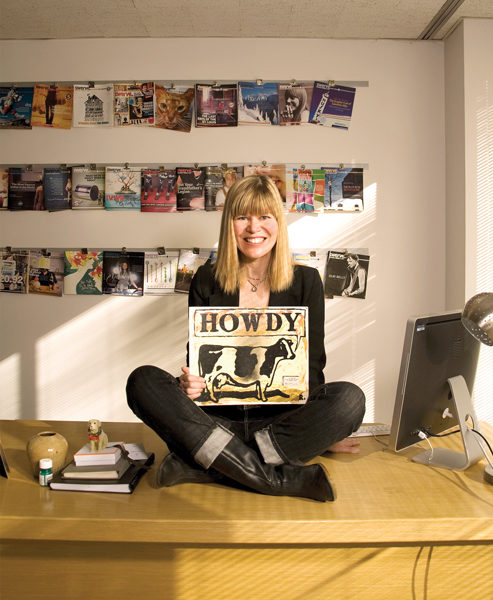The Incredible Shrinking Newscast
For a lot of radio programmers, no news is good business
In 1981, the Federal Communications Commission deregulated radio in the U.S. and changed the character of American stations. Among the regulations relaxed were those governing news content-a station is no longer required to broadcast any news whatsoever-and the result has been that too many stations have become little more than free jukeboxes. The reason is that while news costs money to produce, it doesn’t generate revenue, and private radio stations are in the business to make money.
In 1986 alone, according to a study by University of Missouri journalism professor Vernon Stone, 2,000 full-time positions in radio news disappeared. Stone also found that more than 20 per cent of all major-market radio stations made cutbacks in news broadcasts, while only four per cent increased their coverage. Indeed, from 1985 to 1986 fulltime news staffs dropped by nearly half-from an average of 2.7 people to 1.4. In fact, since 1981, whole news departments have been put on the street. This is bad news for American radio journalists, but what is the situation in Canada? Here, radio news directors are thankful that the Canadian Radio-television and Telecommunications Commission exists to control content, and they trust that the CRTC will not take our broadcast news industry down the FCC route. CRTC Chairman Andre Bureau gave this assurance in a 1986 speech to the Canadian Association of Broadcasters’ convention in Toronto, where he said the commission regards news as an integral part of Canadian culture and identity. And Richard Frith, a senior planning officer at the CRTC’s radio policy planning and analysis department, says, “I can’t see the commission allowing a station to eliminate news altogether. It wants to see stations providing well-rounded service to the communities they serve.” But is the news directors’ faith in the CRTC well placed?
The latest regulations, published in 1986, contain nothing about news content nor any rules governing the minimum number of hours a station must devote to news. While all stations must submit a Promise of Performance, which outlines their specific programing plans, adhering to the PoP is a condition of licence for FM stations only. If an FM station wants to reduce the amount of news it has agreed to air by 20 per cent or more, Frith says it has to make prior application to the commission; for any change below 20 per cent, stations just inform the CRTC. As for AM stations, he says they “can do pretty much what they want as far as reductions go during the licence term, but when that term is up they have to explain what’s going on if the commission wants to talk it over with them.” Frith says that a station’s own perception of what its audience needs and wants, combined with CRTC regulations and market forces, controls news on AM stations. There’s evidence that at least in some cases stations’ commitment to news is gradually being eroded. For example, according to its 1979 PoP statement, CKEY, a Toronto AM station, broadcast 13 hours and 54 minutes of news each week; at the time of its most recent licence renewal, in 1985, it pledged only 12 hours and 17 minutes. And in 10 years Toronto’s CHUM-FM has reduced the amount of news and information programming It runs Monday to Friday by nearly half, from 8.3 hours to 4.5 hours.
The CRTC defines news as “the recounting or reporting of information on recent local, regional, national and international events, with little or no interpretation.” Frith says many stations meet their PoP agreement by supplementing news content with softer material such as human interest and so-called enrichment programming, which encompasses everything from items on new developments in medicine and science to business and entertainment features. While the CRTC doesn’t disapprove of this practice, at licence renewal time a station is expected to show why lifestyle news rather than hard news is appropriate for its audience. Brian Thomas, CHUM-FM’s manager of news operations and public affairs, says some stations have cut back on news with permission from the CRTC. “The way the commission sees it, times have changed,” he says. “There are more stations now and listeners have many places to get news.” Some argue that where a strong AM news station already exists in a crowded market, it’s redundant for music-oriented stations to carry news. “I think most programmers would say they do news because they feel an obligation to their audience,” says Henry Mietkiewicz, radio columnist for The Toronto Star from 1983 to 1987. “But I think if they had the choice, they’d drop most of their information programming. Basically, music stations don’t really want to be bothered with news.” Cutting news content to zero, even if it were allowed by the CRTC, would likely mean losing listeners. There is a point beyond which no station is going to go. “Even those listeners least interested in Amount of it,” says Pierre Nadeau, senior vice-president for radio at the Canadian Association of Broadcasters. Nadeau says he wouldn’t be surprised to find that some FM stations have reduced their commitment to news, but he also wouldn’t be surprised if some AM stations have increased theirs.
Generally, Nadeau says, listeners tune to AM stations for news and information and to FM for music. “Rock and pop stations don’t consider news a strong part of what they do,” says Mietkiewicz. “They don’t consider it important for their audience. So to criticize them for not covering local events as well as they ought to means nothing, because they are doing exactly as they intend.” Certainly, Toronto’s music oriented CHFI clearly intended last October to drop its 9 a.m. newscast in favor of a commercial free half hour of music. “Let’s just say the change was made to fit various programming competitive strategies,” News Director Ben Steinfeld says. Then he adds, “Go talk to the program director. It was his decision.” The morning the newscast was cut, Steinfeld went to the mike to read the nine o’clock news only to officially learn it no longer existed. In Metropolitan Toronto alone, there are 16 private radio stations competing for a slice of the market, plus another half dozen or so nearby. For all of them, producing news is costly. “News directors have to fight like hell for what they want and they don’t always win,” says Warren Beck, news director at Hamilton’s CHML from 1966 to 1985, and now coordinator of broadcast journalism at Hamilton’s Mohawk College. “But management sees the newsroom as the area where they can cut back.” Steinfeld believes the problem lies with the programmers. “They only understand numbers,” he says. “What wins is going to stay, what loses is going to go.” The only way to convince them news is worth keeping is by getting good ratings. “Programmers will say, ‘Those blankety-blank CRTC rules.
If it wasn’t for them, we’d be able to play more music.'” Steinfeld says that if the CRTC rules were dissolved tomorrow, half the news broadcasts now aired would cease to exist. News directors also have to contend with radio consultants “modern-day rainmakers,” Steinfeld calls them-who tell their bosses less news means more profit. Their “propagandistic drivel” includes cutting the news and playing the hits. But radio consultant David Oakes, president of Toronto’s Forecast Communications Research, has this to say: “The best thing for journalists to do, from my way of thinking, is to go out into the real world and leave their journalism behind.” According to Oakes’s research, what people want right now are updates. To him, news directors who think it’s their role in life to tell people what’s going on in the world are using their natural human egoism as a defence against change. He says there is only so much news an audience will take. Getting to the main stories and getting “the hell off of them quick” is the key. However, John Hardy, Warren Beck’s successor as news director at CHML, says one-minute news updates cheat people: “It takes 40 seconds to tell them the weather details, and the news in 68 seconds is almost an insult. You may as well not say anything at all.” Steinfeld agrees: “You’re just giving them the hits and misses.” News directors believe they might be less vulnerable if management came from the newsroom instead of the sales department; however, this is not often the case. Beck suggests instead that news directors get out of their cocoons and find out what the rest of the station is doing. “If you’re not involved in management decisions, your department is the one that’s going to be hit the hardest.” You have to spend money to make money, but Pierre Nadeau says few stations have strong enough financial backing to commit the millions of dollars needed for the long term-say, five years -to develop a top-ranked newsroom. “You certainly wouldn’t get there without ulcers,” he says. “You could pump $5 million a year into it and still not know what the results will be.”
The future of news on private radio stations doesn’t rest solely with the CRTC. The decision to make the necessary investment in news budgets to pay for the labor-intensive news coverage rests with station management. News directors, take heed.
by Cia Curtis
Cia Curtis was an Associate Editor for the Spring 1988 issue of the Ryerson Review of Journalism.















































Besides, the Argentines don’t seem particularly bothered by it all.
Cicero told the story of Damocles; Wanting desperately to be
king, he was allowed to be monarch for a day and sit upon the throne.
I have seen strangers on the news helping others that they don’t even know
or have ever met.